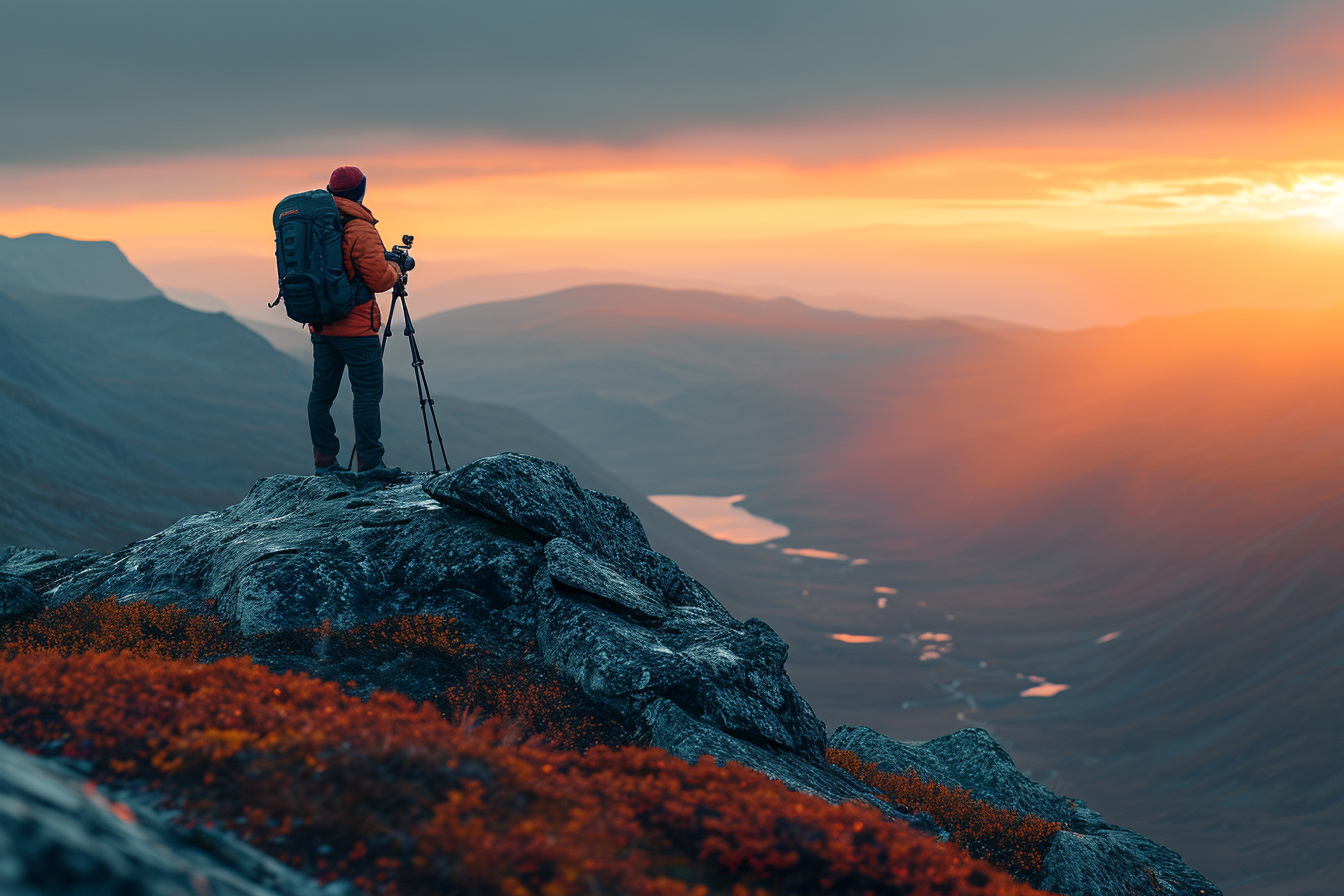Landscape photography is a sublime art form that captures the vastness and beauty of the natural world. From the striking texture of a rocky shoreline to the serene expanse of a mountain range cloaked in mist, photographers seek to immortalize these moments with clarity and depth. One potent tool in the landscape photographer’s arsenal is the tilt-shift lens—a sophisticated piece of optical engineering that can revolutionize the way scenes are captured, allowing for a novel interaction with space and perspective.
Understanding tilt-shift lenses

What is a Tilt-Shift Lens?
Before delving into techniques, a foundational understanding of what tilt-shift lenses are and how they differ from standard lenses is crucial. A tilt-shift lens permits two distinctive movements—tilting and shifting—which facilitate corrections in perspective and focal plane manipulation.
Tilting alters the angle of the lens relative to the image sensor, adjusting the plane of focus in accordance with the Scheimpflug principle. This can enable photographers to achieve sharp focus throughout a scene which would be impossible with a standard lens.
Shifting vertically or horizontally moves the lens’s optical axis away from the center of the image sensor. This capability is especially valuable in correcting for converging vertical lines in architectural photography, but it also holds unique advantages in landscape work.
Leveraging tilt for enhanced depth of field

Expanding Depth of Field with Precision
One significant advantage of tilt functionality is the precise control over the depth of field. Traditional lenses rely on aperture adjustments to increase depth of field, often at a cost of diffraction and loss of image sharpness when using very small apertures. Through tilting, the lens enables photographers to align the plane of focus with the landscape, ensuring that vast expanses from the foreground to the horizon remain in sharp focus, even at wider aperture settings.
Crafting the Perfect Landscape With the Scheimpflug Principle
Utilizing the Scheimpflug principle, photographers can angle the lens to ensure the sensor, lens plane, and the plane of focus intersect. In practical terms, when photographing a landscape, tilting the lens downward slightly will bring both the immediate foreground and the distant background into focus. The skill lies in identifying the appropriate angle and degree of tilt to render the entire scene sharply.
Harnessing shift for creative composition
Eliminating Distortion for a True Representation
Shift movements allow photographers to maintain a camera’s parallel stance to subjects such as trees or buildings, thus avoiding perspective distortion. When capturing a landscape with prominent vertical elements, shifting enables photographers to retain the natural straightness of these features, providing a truer representation of the scene.
Exploring New Perspectives in Composition
With a tilt-shift lens, framing and composition take on additional dimensions. A shift movement may bring high or low elements into the frame without altering camera placement or angle, presenting opportunities to experiment with unconventional compositional techniques. This flexibility opens new windows to visual storytelling within the realm of landscapes.
Technical mastery of tilt-shift lenses in the field
Setting Up for Success: Tips and Techniques
Out in the field, deploying a tilt-shift lens demands deliberate setup and an understanding of its mechanical operation. Most tilt-shift lenses don’t communicate electronically with the camera, requiring manual adjustments and focus. Here are the essential steps to mastering this unique equipment:
- Begin with the lens in its neutral position, without any tilt or shift applied.
- Compose your scene using the camera’s viewfinder or live view screen.
- Determine the plane you wish to keep in focus and gently apply the tilt. Use the lens’s markings as a starting point, then fine-tune the focus by eye.
- Take test shots and review them to ensure sharpness across the desired areas.
- If required, apply shift movements to alter the composition or correct for any convergence.
Setting the Correct Exposure
Without electronic aids, setting the correct exposure with a tilt-shift lens is often done manually. It’s essential to meter the light correctly and make adjustments to the aperture, shutter speed, and ISO accordingly. Bracketing exposures can be beneficial, providing options for achieving the ideal exposure during post-processing.
Advanced techniques and creative applications
Stitching Panoramas for Expansive Views
One advanced application of shift movements is the creation of panoramic images. By keeping the camera stationary and shifting the lens from side to side (or up and down for vertical panoramas), photographers can capture a wider view with consistent perspective and no distortion. These multiple images can then be seamlessly stitched together in post-processing software to create grand, expansive views of landscapes.
Selective Focus for Artistic Effect
Beyond technical corrections, tilt can be used creatively to isolate subjects and direct the viewer’s attention. By tilting the lens against the landscape’s plane of focus, a sliver of sharpness can be created while the rest of the image falls into a soft blur. This technique can turn an ordinary landscape into a dreamlike scene, emphasizing specific elements and creating a miniature-like effect.
Post-Processing tilt-shift photographs
Refining the Raw Image
Despite the in-camera precision that tilt-shift lenses afford, post-processing plays an invaluable role in refining the final image. Adjustments to color balance, contrast, and sharpness can further enhance the visual impact of the landscape. Software corrections can also address any minor misalignments or residual distortions not corrected in-camera.
Achieving the Desired Aesthetic
The art of landscape photography is often about conveying a mood or narrative. Post-processing tools offer countless possibilities to craft the desired aesthetic. Whether that means amplifying the drama of storm clouds with increased contrast, bringing out the textures in a rock formation, or adjusting hues to reflect the warmth of a sunset, the digital darkroom is as critical a component in landscape photography as the camera and lens.
Ethical considerations in landscape photography
Respect for the Natural Environment
Using a tilt-shift lens enables photographers to capture landscapes in compelling ways, but with such capability comes responsibility. Protecting the environment and respecting local regulations and customs when photographing is a cornerstone of ethical landscape photography. The goal should always be to leave no trace and to conserve the pristine beauty of nature for future generations.
Fostering a community of learning and sharing
Engagement and Growth Among Landscape Photographers
As photographers explore the versatility and creative potential offered by tilt-shift lenses, fostering a community of learning becomes indispensable. Forums, workshops, and social media groups devoted to landscape photography serve as platforms for exchanging tips, offering constructive feedback, and showcasing unique applications of tilt-shift lenses.
Through a combination of technical acumen, creative vision, and a deep respect for nature, mastering landscape photography with a tilt-shift lens embodies the pursuit of capturing not just images, but ephemeral moments of our world’s beauty. The ongoing journey of exploration and learning ensures that each photograph tells a story, opens a dialogue, and stands as a testament to the ever-evolving art of photography.

Leave a Reply